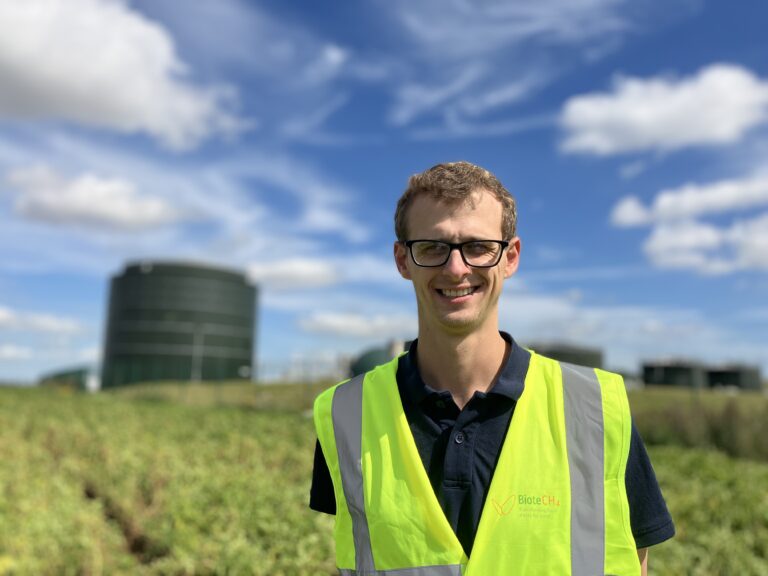The Benefits of Using Digestate Instead of Fertilisers
- Education
- -
As a farmer, you might wonder why you’d ever use digestate instead of chemical fertilisers on your fields. The latter is much less bulky, easily transportable and stored, easier to spread, and you know exactly what you’re putting into the soil.
Whilst all those points are correct, here’s why you might want to use digestate to feed your crops.
Key Points
- Cheaper alternative
- Easier to store
- More readily available
- More eco-friendly
- Is nutrient-rich and better for the soil
Why Digestate is Better than Fertiliser for your Crop
It's More Readily Available
Bagged fertiliser is considered more convenient because it’s dry, making it less bulky and more easily applied to the soil. However, the dry fertiliser prills need water to be useable. The granules dissolve, become a liquid solution in the soil, and that’s what the roots absorb. Without water, the prills will remain in the ground, taking much longer to break down and become available.
Digestate, on the other hand, is over 90% water. It doesn’t need any additional moisture for it to be absorbed by the plant. It is available almost instantly. That means you can apply it when the crop needs it the most and get almost instant results.
A More Complex Mix of Nutrients
Anaerobic digestate is called “rocket fuel” for crops for a good reason. Plants need nitrogen (N) to grow healthy foliage. They also need potassium (K) and phosphorous (P), among other things. However, in order for the plant to absorb these nutrients from the soil, it needs additional nutrients.
For example, you must have heard that your body needs vitamin D and magnesium in order to be able to use calcium, right? Similarly, wheat needs sulphur (S) in order to absorb nitrogen.
When you apply, say, ammonium nitrate, you know exactly what you’re putting into the soil. That’s the advantage of chemical fertilisers. Unfortunately, that’s also its drawback. You know you’ve put so much nitrogen in the soil, but if your soil is lacking in other chemicals, that nitrogen may not get adequately absorbed.
Digestate, on the other hand, is extremely rich in nitrogen but also has other nutrients that your soil and crop need. Each tonne or m3 of digestate made from food waste provides about 5 kg of nitrogen (of which 4 kg is readily available) but also approximately 1.8 kg of phosphorous and 1.8 kg of potassium.
To put things into perspective, digestate from anaerobic digestion of food waste contains the majority of the nutrient requirements for your crop. Additionally, it also contains micronutrients that not only make your crop healthier but also make it more nutritious for people and animals that consume it.
Costs Less Per Kilo of Nitrogen
Chemical fertiliser is not produced locally. For that reason, its price can vary over time. In 2022, it was nearly three times its normal cost due to the effects of the pandemic and the war in Ukraine. However, even when the cost is not sky-high, bagged fertiliser can prove to be more expensive than digestate.
James Brooks, Home Farm
The reason for its lower price is that anaerobic digestate is produced locally. It doesn’t have to travel across countries (or even across the country) to reach your farm. It’s also made from waste, which affects the cost of raw materials.
And it provides a lot more available nutrients, as we saw earlier. All of this, without you having to compromise on your yield.
Easier to Store
On the face of it, it might seem that bags of dry fertiliser are easier to store than tonnes of liquid digestate. And, generally, it is easier, as long as you follow the storage guidelines and laws, of course. Guidelines that, if ignored, may lead to clumping of the fertiliser (leading to uneven application) at best and a chemical fire at worst.
Digestate, on the other hand, requires a tank or a lagoon for storage. These essentially just need to be easily accessible. That’s it.

Isaac Carswell | Digestate Manager
More Eco-Friendly
The process of manufacturing and transporting bagged fertiliser leads to a higher carbon footprint. On the other hand, digestate is made from the lowest-emissions method of treating food waste. Whatever greenhouse gases that waste could have released are extracted and captured. The remaining slurry—the digestate—is nutrition for your crops.
Food waste digestate also makes the perfect circular economy. It provides nutrition to crops that become food for people and animals. The wheat goes to become bread or cakes. Or, it’s fed to cows to produce milk and dairy products or meat. By-products and waste from these food items go into the digester to produce the Digestate that will go into your farms to complete the circle.
Plus, since it’s being produced locally, it doesn’t have to travel across thousands of miles, making it even more “green”.
Better for the Soil
We’ve said this before, but chemical fertilisers are great because you know exactly what you’re getting and in what quantity. That is also a drawback because you are getting a very specific chemical compound and nothing else.
Anaerobic digestate, especially when made from food waste, is a much more well-rounded mix of nutrients. Additionally, it also contains organic matter to condition the soil, which can improve soil quality over time.
Using digestate for your farm instead of fertiliser is the same as eating a healthy diet instead of popping multivitamin pills. You get a well-rounded nutrition profile at a much lower cost.
And the best part is that your soil health will improve over time.
With your own storage, you can also have digestate available whenever you need it. To discuss your fertilising or digestate storing needs, get in touch with us. We’d be happy to walk you through your options.
Could using Digestate be the Answer to the
Rising Cost of Artificial Fertilisers?
In a time where are all watching our spending, it makes sense to provide cost-effective alternatives for business owners and farmers alike. Read on to find out more about how the rising costs of artificial fertilisers is effecting the sector.



